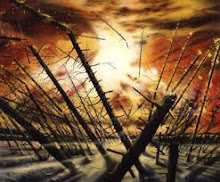Meteors become visible between about 65 to 120 kilometers above the Earth. They disintegrate at altitudes of 50 to 95 kilometers. Meteors have roughly a fifty percent chance of a daylight (or near daylight) collision with the Earth. Most meteors are, however, observed at night, when darkness allows fainter objects to be recognized.
For bodies with a size scale larger than the atmospheric mean free path (10 cm to several metres) the visibility is due to the atmospheric ram pressure (not friction) that heats the meteoroid so that it glows and creates a shining trail of gases and melted meteoroid particles. The gases include vaporized meteoroid material and atmospheric gases that heat up when the meteoroid passes through the atmosphere. Most meteors glow for about a second. A relatively small percentage of meteoroids hit the Earth's atmosphere and then pass out again: these are termed Earth-grazing fireballs (for example The Great Daylight 1972 Fireball).
Meteors may occur in showers, which arise when the Earth passes through a trail of debris left by a comet, or as "random" or "sporadic" meteors, not associated with a specific single cause. A number of specific meteors have been observed, largely by members of the public and largely by accident, but with enough detail that orbits of the meteoroids producing the meteors have been calculated. All of the orbits passed through the asteroid belt.




No comments:
Post a Comment